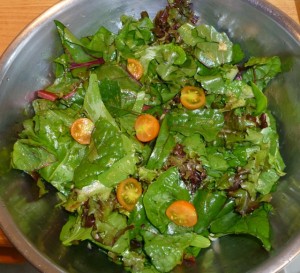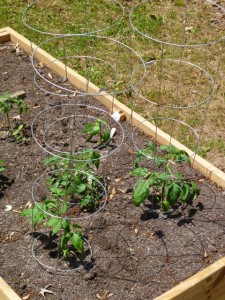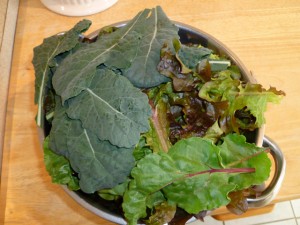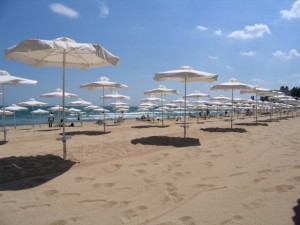One Year of Gardening: What Is Easy, What Is Hard
Just over a year ago, we put in our first back yard, raised bed garden. At this point, we are still not experts, still have more unsuccessful plants than successful ones, and are still frequently overwhelmed by all that we do not know.
But one thing we have learned over the last year is which vegetables are really easy to grow, which are nearly impossible, and which fall in between, at least in our particular mountain climate in Western North Carolina. Wherever you live, it could of course be completely different.
What’s Easy:
- Greens of just about any kind, including beets, chard, lamb’s quarters, lettuces, kale, Asian greens, collards, and cilantro. The Asian greens and kale do need frequent tending to pull off cabbage worms that will annihilate a plant within days. The lettuces tend to attract aphids which can be dealt with using natural sprays.
- Snap peas. Give them some nice thin lattice to climb up and they are good to go.
- Strawberries. They need a little time to get established, but once they do, they can take over a garden bed.
- Green onions. I stuck some seeds in the ground, didn’t pay much attention, and in a few weeks I had fresh onions.
- Sun gold tomatoes (orange cherry-sized). The only tomatoes that have done well for me. This one plant grew like crazy and provided dozens of little tomatoes each week for a few months.
What’s hard:
- Tomatoes (aside from those sun golds). I tried two years in a row and both times they were destroyed by blight. That is a fungus that causes the tomatoes to rot on the vine, but it is a regional problem so you may not have to worry about it. At least this year I managed to get a half dozen brandywine tomatoes out of the garden.
- Watermelon. I was so excited to be able to grow my own fruit. When the little melons started to form on the vine, I was hopeful that this would be a success. Then the plant just shriveled up and died without warning. On the other hand, my neighbor has a front lawn composed entirely of beautiful watermelons, so I know it’s not impossible.
- Cucumbers. In two years I have managed to enjoy only 3 cucumbers from my garden. The first year they were destroyed by pickle worms. The second year the plants got some kind of fungus and died. Those 3 cukes sure were delicious though.
- Blueberries. I have killed 2 bushes and I have one that is surviving but has yet to produce a single edible berry.
- Garlic. I don’t even know what happened. It just died.
What’s hit-or-miss:
- Bell peppers. I got a few good ones last year (even though I planted them too late) and this year I have 2 plants that are producing quite a few good-looking peppers. The jury is still out but it looks promising.
- Squash. My summer squash was phenomenal and plentiful last year, until pickle worms destroyed it. When I somehow managed to accidentally plant spaghetti squash this year, it produced only a few squashes which molded before they were ready to be picked.
That’s how it’s gone for us so far. What’s important is that this year has been more successful than last year. If we can keep that trend going, we’ll be in great shape.







 We’ve been filtering our water for years, but after doing more research on water, decided to switch to bottled distilled water. Tap water is so bad these days that filtering it doesn’t get all the chemicals out. Flouride, in particular, was the main impetus for the switch. That’s not to say that filtering your tap water is not worthwhile, because it is. We chose to take the extra step.
We’ve been filtering our water for years, but after doing more research on water, decided to switch to bottled distilled water. Tap water is so bad these days that filtering it doesn’t get all the chemicals out. Flouride, in particular, was the main impetus for the switch. That’s not to say that filtering your tap water is not worthwhile, because it is. We chose to take the extra step.

